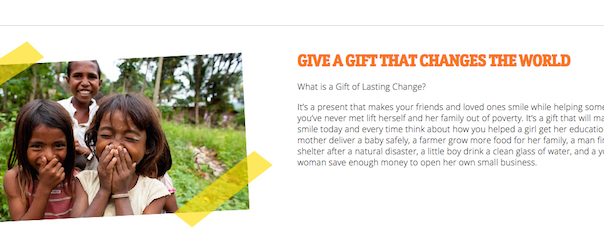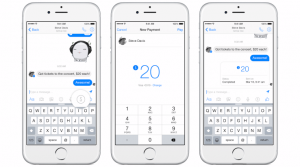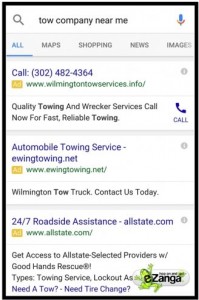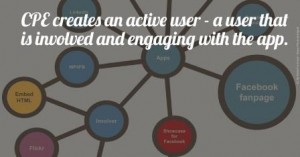
Birchbox and Dollar Shave Club are two successful and inspirational companies who, along with a handful of others, have transformed the way consumers think about monthly subscriptions to health & beauty items and the way products can be packaged as sets. But today, on Veteran’s Day, let’s take a look back, and recognize the very first organization to successfully assemble and distribute care packages en masse: Care.org.
In 1945, 22 U.S. organizations came together to rush lifesaving CARE Packages to survivors of World War II. Thousands of Americans, including President Truman, contributed to the effort, and on May 11, 1946, the first 20,000 packages reached the battered port of Le Havre, France.
Today, care packages are still synonymous with sending goods and items of need to military personnel. They have also become common gifts for college students and emergency relief kits for those affected by natural disasters both at home and abroad. And while CARE, the non-profit grandchild of the first care package effort, no longer sends physical care packages –– the organization and good will behind that 1945 initiative are still alive and well.
Humanitarianism Meets Cause Commerce
Seventy years since CARE’s launch, rather than sending care packages, hundreds of thousands of Americans flock to the organization’s site, CARE.org, to donate to the world’s most pressing humanitarian emergencies. CARE works to identify those emergencies, educate donors on those issues and find ways to get funds in the hands of those who can help.

In 2014, however, the organization decided to do something a little different. Staying true to their humanitarian roots, CARE launched Gifts.care.org, an ecommerce site on which consumers can symbolically gift needed goods to those around the world, all in the name of a friend or family member.
With the gifts section, consumers can choose to gift a well, a goat or a scholarship –– to name only a few options –– all in honor of someone they would have otherwise given a holiday present.
And, the organization’s timing couldn’t have been more relevant. CARE launched the gifts site in November 2014, a time period in which cause commerce was becoming increasingly popular. TOMS Shoes and Warby Parker are just two of the brands that helped make giving back a part of a millennial’s purchasing decision. Today, here’s the preferred methods those between the ages of 18 and 34 most readily give to charity.

How to Launch a Successful Cause Commerce Initiative Mere Weeks Before the Holidays
OK, so CARE’s gift site launched in the heyday of cause commerce, helping to ensure that the site would be a success. But, if you’re paying attention to the timeline here –– Gifts.care.org launched in November 2014 –– the team only had a few weeks until one of the biggest shopping days of the year: Black Friday. Getting the new initiative out in front of prospects and supporters ASAP was the next step.
“Our main objective was really to get this thing going and get it up,” says Kuan Sng, senior director of digital and direct response. “Our approach was to first find a platform to use that would integrate with our system directly. Then, find a template that we could customize to match the CARE brand. As far as the site being a success, that’s really attributed to our emails. We literally saw a huge spike in sales when we sent those out.”
Typically, if there is a new humanitarian issue in need of funding or a campaign the team is running, CARE.org will send an email out. For the most part, however, CARE’s digital team is aware of how much email everyone already receives, and wants to be sure that when they send something, it gets opened.
“The number of people on our email base is a big number, but I’ll caveat that by saying a lot of our campaigns restrict that number because there are different paths,” says Sng. “I’d say about half of [our contacts] we hardly touch, as they are suppressed for a variety of reasons. We don’t want to treat them with disrespect, bombard their email and have them unsubscribe.”
So the team used one of Care.org’s already planned email sends, which would have highlighted the benefits of donating for the holidays, and turned it into an announcement email for the gifts site.
“We tried to divide it into two waves,” says Sng. “The pre-Christmas wave focused on linking to the gift catalog. Then from December 26 to the 31, the email links sent everyone to CARE.org, the main donation website, because holiday gifting season after December 25 is essentially over; and tax-deductible charitable contributions become the main driver.”
And while last year’s gift website efforts were more of a test than a strategy for moving forward, the initiative’s success has set some serious benchmarks for the organization. This year, the CARE team behind the gifts site has a goal to surpass, and a few new marketing tactics to test out.
“We want to actually look at this in a multichannel way in terms of the timing,” says Sng. “Generate creative collateral offline and online, place search and social ads, etc. This is significant, though, because we know some of our channels are silo-ed. All of this is kind of new to us.
In all, the CARE digital team is just looking to do their part this holiday season, allowing consumers across the globe to give gifts to those truly in need. Cause commerce may be a trendy ecommerce fad, but Gifts.care.org isn’t in it for the popularity.
“What’s unique about CARE’s gift catalog is we offer a wide range of symbolic gifts, more than almost all our peers. We also grouped gifts into interesting categories, like hobbies and occupations, to deliver a fun browsing experience in order to serendipitously tap the many unique facets that characterize friendships and relationships between people,” says Sng. “That was one of our biggest hurdles to overcome, a big extra piece we had to kind of just figure out. And even as a brand new thing, I think it generated some interest. Not only was it a new thing, but it was launched right around giving season, so that definitely gave us a nice bump end of the year.”
Digital & Social Articles on Business 2 Community(171)







